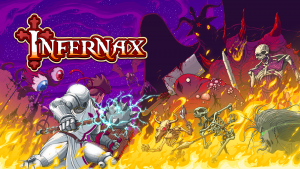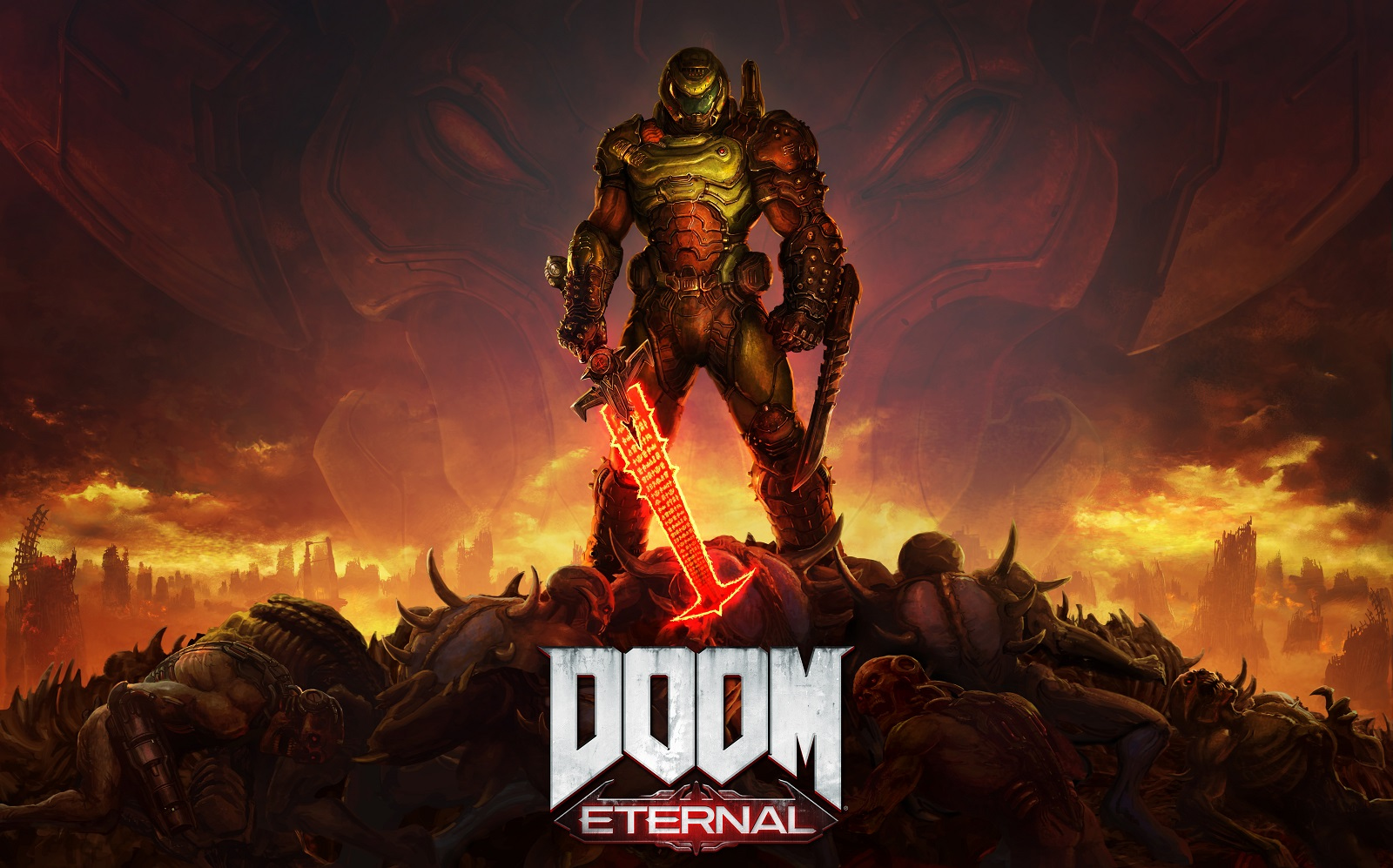
In 2016, id Software once again took the gaming world by storm with their fantastic reboot of the Doom franchise. Inspired by the retro-shooters of old it was a non-stop deluge of viscera and pure adrenaline. Placing as much emphasis on movement as shooting, it forced players to dodge and weave between the demonic hordes at blistering speeds, all while carefully replenishing health and ammo in a constant loop. Four years later we finally have a followup to the modern-shooter classic, a game that seeks to answer a question, how do you iterate on FPS perfection?
In short, Doom Eternal‘s solution to this problem is to simply layer on as much new content as possible, stuffing the game with myriad systems, diversions, and extra complexities. While the beating heart of the experience, the blazing-fast gunplay, is still pulse-pounding insanity, much of the extra content comes off as an annoying distraction. There’s first-person platforming, lots of exploration, dozens of collectibles per level, reams of lore, and way too many different progression mechanics. Sequels need to iterate, but the “everything but the kitchen sink” approach taken here is overwhelming and simply distracts from the main attraction.
Thankfully, the part where you get to gib demons is very, very good. Expanding on the tight gameplay loop of Doom (2016), Doom Eternal is a relentless shooter that demands your undivided attention. Gratifying weapons, an ingenious resource loop, smooth platforming, and a wide variety of grotesque foes combine to create searing combat arenas that keep you fully engaged. Unlike most other shooters, movement is both fun and essential. If you stand still you will almost immediately get wiped by volleys of bullets, the fists of gargantuan bruisers, and hellfire. To outrun and outlast your hideous enemies, you must stay in constant motion as you juke volleys of incoming projectiles. In addition to a double jump, there is also an air-dash that grants even more mobility, enabling a whole manner of dextrous evasions. Even on a controller, aiming feels accurate and responsive, stealthy aim assists granting precision as you barrel through the environments.
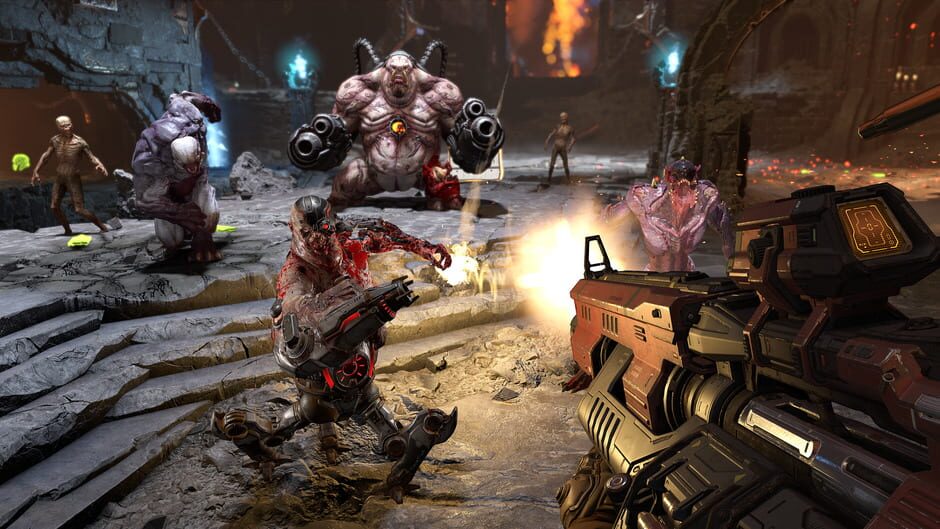
But beyond just evading and killing enemies, survival also requires careful management of your health, ammo, and armor. To naturally restore these resources you must dispose of enemies in specific ways, adding additional layers of complexity to every battle. The main way to restore your health is to perform a Glory Kill, a finishing move that can be triggered as an enemy is critically injured. To restore ammo you must use your trusty chainsaw on weaker enemies, resulting in a pinata-like explosion of armaments. To replenish your armor, light demons on fire and then finish them off. This loop generally works excellently, forcing constant decision making. Since the flamethrower and chainsaw have a cooldown after each use, you have to carefully weigh when is the right time to pop these abilities to maximize their effects.
On harder difficulties, you will constantly be on the verge of death, zipping past larger monsters so you can pick off a few weaklings for a Glory Kill. That said, with some of the new abilities, things can sometimes verge on being unpleasantly overwhelming. The addition of both shrapnel and freeze grenades, alongside the ability to to use Glory Kills to charge your Blood Punch, a powered-up melee attack that also restores your health, means that there are always a ton of different options available to you. While I eventually become more comfortable with this laundry list of different capabilities, it could be argued that even this aspect of this game is somewhat overstuffed.
The savage combat is further amplified by a large arsenal of different weapons, each of which boasts unique strengths and weaknesses. Among others, there’s a pump-action shotgun and assault rifle that are great for setting up glory kills, a chaingun which rips through even the sturdiest of foes, and of course the fan-favorite BFG. On top of a large number of different guns, each weapon has two different unlockable alternate firing modes, creating a degree of granularity that enables many different play styles and strategies. While disparate, the weapons uniformly help you mete out gratifying destruction and inject a great deal of variety into your demon-slaying. The multitude of different enemy types necessitates the usage of these many weapons, constantly keeping you on your toes as you handle these unique threats. Some demons are fodder that must be utilized for health, ammo, and armor. Others are long-range powerhouses with dangerous abilities that must be neutralized by taking out their weak points. Some are bulky tanks that try to eviscerate you from up close.
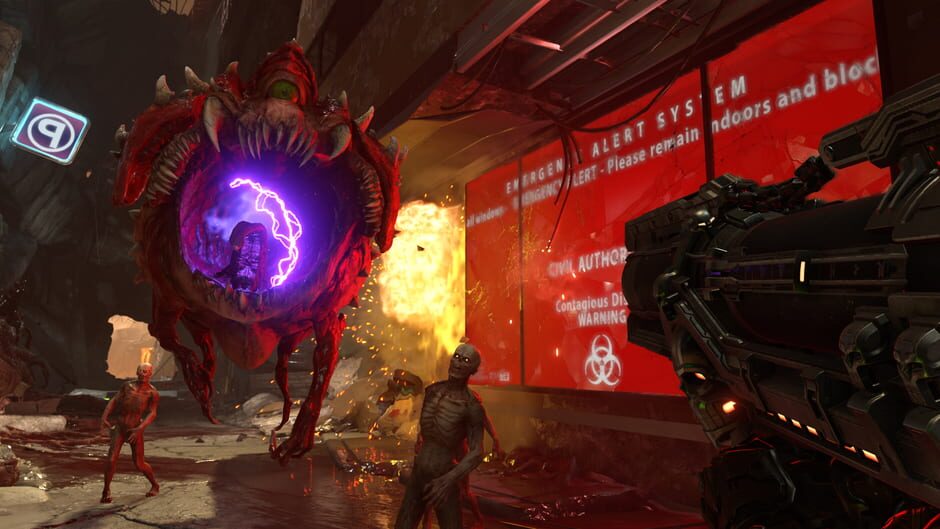
The one major downside to these brutal crucibles is that there are some powerful enemy types that disrupt the flow of combat. While this is entirely limited to enemies that are introduced as bosses, the pesky Marauders begin to appear in larger numbers after their initial encounter. These foes block all of your attacks, and you must carefully parry their lunges to open them up. However, only one of their attack types is punishable, meaning that they will frequently pepper you with hard to dodge projectiles that slowly chip away at your health. Instead of letting you take the initiative like every other demon in the game, you have to sit and wait for them to attack you first, undermining the savage fluidity that defines the rest of the experience. Luckily, there are only a handful of these fights, and they are largely overshadowed by the many great encounters.
But while combat in Doom Eternal is a fairly consistent delight, it sometimes feels as though the rest of the game conspires to deprive you of these pleasures. Levels feel much longer, and the previously described combat arenas are much more spread out than in Doom (2016). Tons of collectibles fill each and every area, often tied to somewhat tedious environmental pixel hunts that require you to find specific switches or destructible walls. Although this content is optional, many of the items you find are important upgrades that can significantly boost your capabilities. At least in my case, this resulted in many situations where I would compulsively check my mini-map as I scoured rooms for another hidden alcove, slowing down my progress considerably. Even more concerningly, sometimes this questionable level-design affects combat, as there are times when you must fight demons in enclosed spaces, or in pits of goo that limit your mobility. In a game defined by freeform movement, these constrictions negatively affect the game’s flow.
There is also a fairly considerable amount of first-person platforming. While the movement feels fine in this context, some of the platforming obstacles can be somewhat frustrating. There are stressful timed sequences that require you to frantically search for the next section of climbable terrain before you plummet to your death. Some jumps feel like they require a degree of precision which is tough to accomplish from a first-person perspective. Climbing causes the camera to jitter in a janky fashion. There are even underwater sequences that force you to briskly swim through areas, searching for obscure means of progression as you slowly succumb to acid damage. While none of these aspects would be overbearing alone, and it makes sense to have some amount of down-time between the chaotic action sequences, these stretches are too long and too frequent.
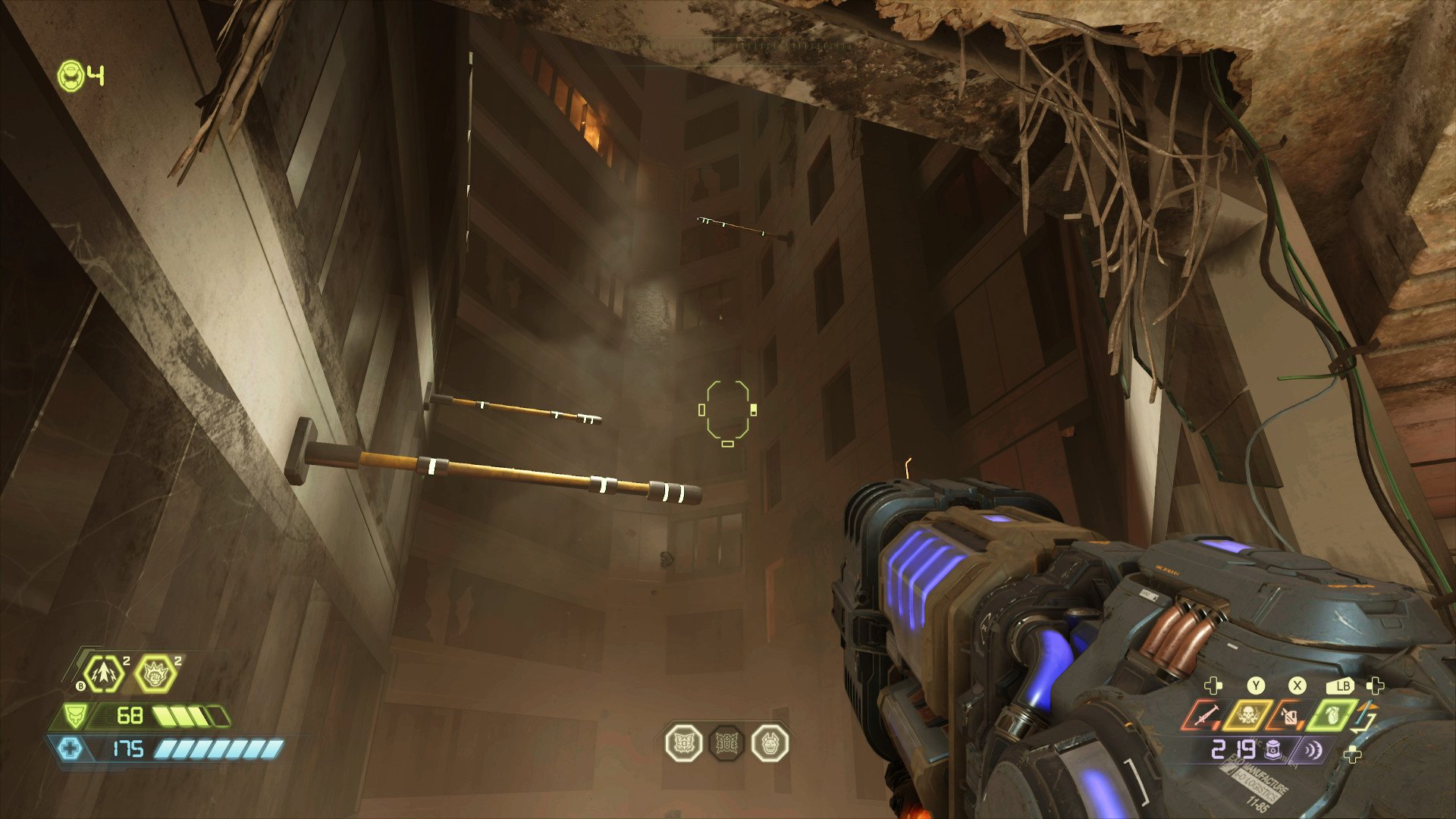
The slew of progression systems is similarly distracting, mostly due to the sheer volume of time spent in menus allocating skill points and choosing various abilities. There are equipable runes that grant certain abilities, Praetor suit upgrades which grant minor boons, weapon mods, weapon upgrade points, and Sentinel Crystals which both boost your resource caps and can also unlock additional abilities. Again, while these progression systems do a good job at granting a constant sense of improvement, the Doom marine becoming even more of an unstoppable juggernaut, there are so many of these systems that you inevitably spend a considerable amount of time in menus tinkering. In short, these upgrade systems could have been streamlined and combined.
There is somehow even way too much lore, tons of Codex entries overexplaining every little detail about this world, and what occurred in Doom (2016). While one of the previous game’s most shocking aspects was how well it delivered a sense of metalhead camp, Doom Eternal manages to bungle its humor while also coming across as overly self-serious. Even worse it completely sidelines Samuel Hayden, your wonderfully hubristic frenemy from the previous game. While Hayden struck a great balance between egotistical technocrat and savior of humanity as the CEO of UAC, in this game his company is a cartoonishly evil mega-corporation that rambles about how humanity should willingly sacrifice itself for flesh-eating demons. It’s supposed to come off as satirical, but instead, it just comes off as on-the-nose and overly silly. Doom‘s focus has never been the story but after the surprising success of the previous game, the plot here is a little disappointing.
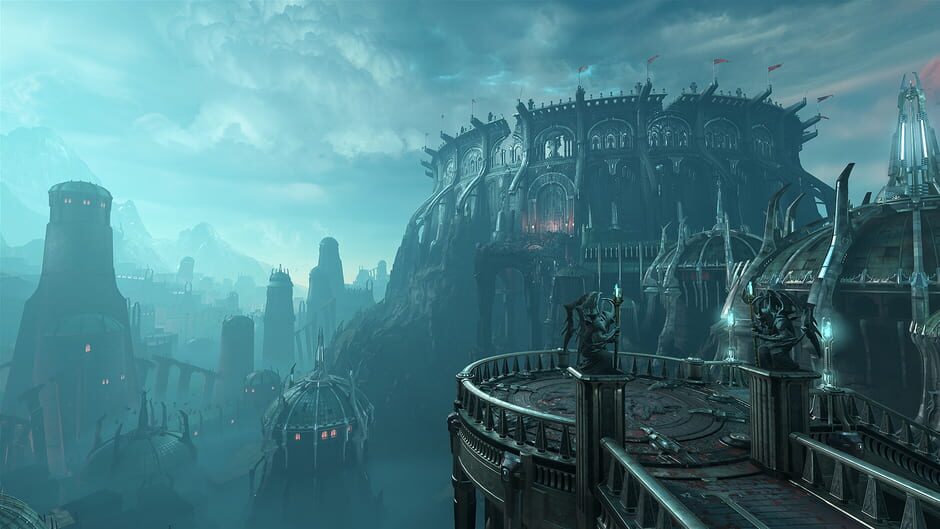
All of this said while Doom Eternal is far more uneven than its predecessor, it largely improves on the cathartic combat of the previous game. Almost every fight is exciting in its own right due to the many variables are thrown your way. Smooth platforming and shooting are complemented by a constant stream of micro-decisions that will make or break you. Thrash metal serenades each and every gory conquest, as you rip and tear your way through the unending hordes in a trancelike state of FPS bliss. It may not be the near-perfect game that Doom (2016) was, but at least it gets the important parts right.
Rating 8.0/10

